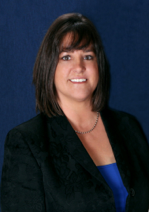 Washington County Public Schools (WCPS) is “building a community that inspires curiosity, creativity, and achievement,” as evidenced by significant curriculum renewal efforts, including the adoption of a 1:1 technology standard for all students in grades 3–12.
Washington County Public Schools (WCPS) is “building a community that inspires curiosity, creativity, and achievement,” as evidenced by significant curriculum renewal efforts, including the adoption of a 1:1 technology standard for all students in grades 3–12.
WCPS is located in Western Maryland and is part of the tri-state area that includes Pennsylvania and West Virginia. More than 22,000 students attend forty-six school facilities, administered by nearly 3,000 employees. WCPS significantly increased its capacity to support personalized learning and access to digital content over a period of years. The system launched digital learning with three individual 1:1 schools. Efforts to increase access to technology included enhancing wireless and network infrastructures, rewarding excellent classroom teachers with devices, and sending key staff to professional development. These initial efforts culminated in the January 2016 districtwide deployment of iPad devices to every student in grades 3–12, and a MacBook for every teacher.
As a Future Ready School (FRS) system, delivering a guaranteed and viable curriculum that integrates digital skills and literacy will continue to be the district’s focus for the years ahead.
The school system engaged in two large-scale and complementary initiatives to align curriculum and assessments with Maryland’s college- and career-ready standards and to provide students with appropriate, modern technology tools. In the last eighteen months, internet access increased in capacity from 500 Mb per second to 2 Gb per second. Additionally, 1,300 wireless access points were positioned throughout the district to create a foundation and allow ubiquitous access. Throughout the reform processes, the focus has not been, and will not be, about the specific technology tools. The top priority remains to provide enhanced learning opportunities using technology to develop deep student understanding of Maryland’s college- and career-ready standards, ultimately increasing student transfer of knowledge and skills to new and novel situations in and beyond school.
Using the device-agnostic self-assessment tools provided by FRS, Project Red’s research, and the Substitution Augmentation Modification Redefinition (SAMR) model, WCPS teacher subcommittees established a digital learning plan. Understanding that technology is a force multiplier for student and teacher learning, district leaders and teachers crafted the plan to enhance access to technology, making personalized learning experiences possible. By April 1, 2016, in excess of 18,000 iPads were purchased, provisioned, and deployed to all schools in the district, effectively providing iPads to all students in grades 3–12 and one iPad for every two students in second grade. WCPS significantly increased its capacity to support personalized learning and deliver digital content through the development of a digital learning plan.
District curriculum leaders created a common language and facilitated teacher groups in the creation of district-level curricula and formative assessments, which incorporate digital resources. Collectively, WCPS teachers designed the backbone for an essential curriculum that is accessible through a digital portal, ensuring a “guaranteed and viable” curriculum for all students in pre-kindergarten through twelfth grade.
To manage digital content, systemwide digital resources must have the capacity to support one or more of the following:
- Self-evaluation and reflection
- Photo and/or video annotation
- Comparison and contrast
- Word-processing with multimedia
- Real-time collaboration
- Mass communication and feedback
- Personalized learning
- Project-based learning
- Formative or summative assessment
FRS emphasizes, “Your main evaluation criteria should be how responsive and usable devices and software are in helping students and teachers complete various tasks.” WCPS developed a rubric to assess the potential of each digital resource to positively impact learning. Teams of teachers vetted digital resources that supported critical thinking and collaborative learning opportunities in alignment with current research.
This new technology standard now allows daily student access to digital content, decreases the impact of required testing on a school, and provides tools to redefine the learning experiences for students. Students, parents, teachers, and administrators can rely on the new standard to support consistent technology access, aligned digital content and resources, and professional development. The use of technology is not intended as a substitute for great teaching; rather it is a tool to enhance great teaching.
The WCPS digital learning plan supports the district’s vision by redefining opportunities for students to be curious and creative, rather than simply substituting ways to increase student engagement and achievement.
About the Author: Peggy Pugh, EdD
 Peggy Pugh, EdD, currently serves as the associate superintendent of curriculum and instruction for Washington County Public Schools (WCPS) in rural western Maryland. Previously, she served as principal of North Hagerstown High School, Boonsboro High School, Northern Middle School, and as the supervisor of secondary English language arts. She was also a student achievement specialist, a literacy resource teacher, and an English teacher for WCPS.
Peggy Pugh, EdD, currently serves as the associate superintendent of curriculum and instruction for Washington County Public Schools (WCPS) in rural western Maryland. Previously, she served as principal of North Hagerstown High School, Boonsboro High School, Northern Middle School, and as the supervisor of secondary English language arts. She was also a student achievement specialist, a literacy resource teacher, and an English teacher for WCPS.
Dr. Pugh earned recognition as a 2013 Maryland and National Blue Ribbon School Principal at Boonsboro High School. In 2012, the United States Department of State Bureau of Educational and Cultural Affairs also recognized the school for contributing to international peace through a sister school relationship with Kanagawa Prefecture, Japan.
Dr. Pugh received her doctoral degree in educational leadership and policy studies from the University of Maryland in 2014, her master’s degree in administration and supervision from Frostburg State University in 2002, and her bachelor’s degree in elementary education from the State University of New York at Cortland in 1991.
